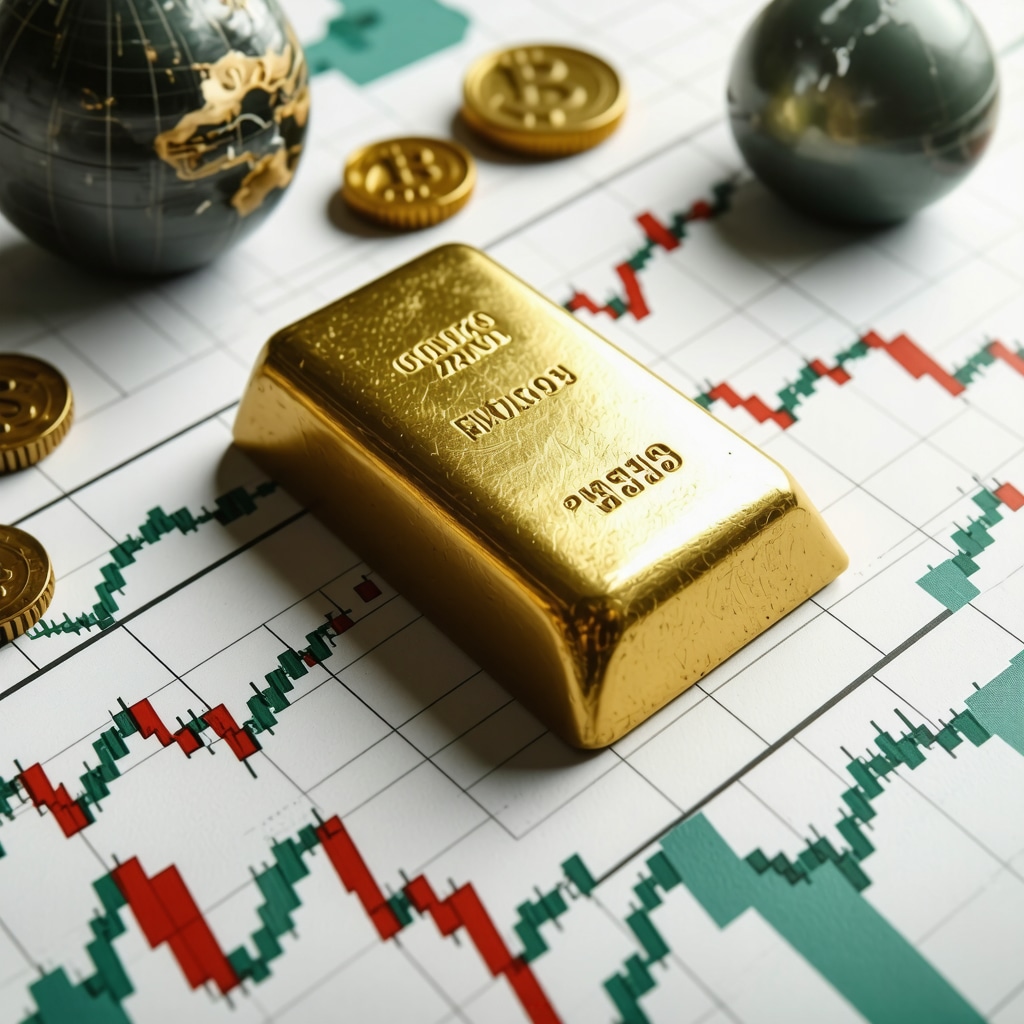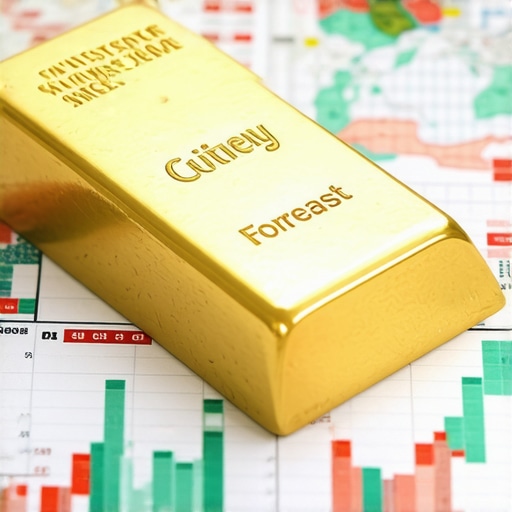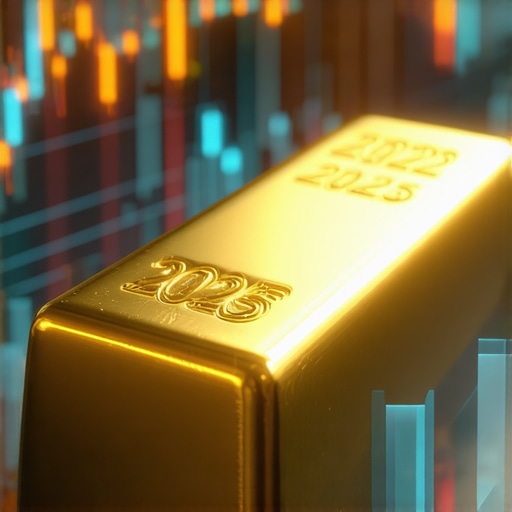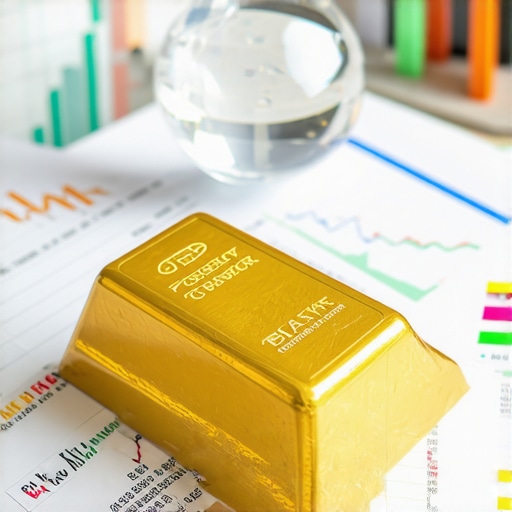Unlocking the Future: Why 2029 Holds a Crucial Chapter for Gold Investors
The gold market has always captivated investors as a sanctuary against economic turbulence, inflation, and currency devaluation. As we look ahead to 2029, the gold price forecast becomes a canvas painted by complex global dynamics that demand a nuanced understanding. Beyond the surface of price charts and speculative chatter lies a matrix of geopolitical shifts, technological advancements, and evolving demand-supply fundamentals that will dictate gold’s trajectory. This article dives into these pivotal factors, offering expert insights to empower your investment decisions with clarity and foresight.
Geopolitical Tremors: The Silent Catalyst Behind Gold Price Surges
Gold’s historical role as a safe haven asset is deeply intertwined with geopolitical uncertainty. The coming years are anticipated to witness heightened geopolitical tensions stemming from shifting power balances, trade disputes, and regional conflicts. For example, escalating strategic rivalries between economic giants can drive investors toward gold as a refuge, pushing prices upward. According to the World Gold Council’s insights on demand trends, such geopolitical risks consistently correlate with increased gold buying, underscoring their influence on market value.
Technological Innovations and Gold Mining: A Double-Edged Sword
Advancements in mining technology and exploration methods are reshaping gold supply dynamics. Enhanced extraction techniques and AI-driven prospecting may increase mine yields, potentially easing supply constraints. However, the capital-intensive nature of these technologies and environmental regulations could temper production growth. This duality creates a delicate balance affecting gold’s availability and price stability. Investors should watch mining stocks and technological trends closely, as they often serve as leading indicators for broader market movements. For further insights on mining-related investments, see our guide to investing in gold mining stocks.
Inflation and Monetary Policies: The Ever-Present Price Drivers
Monetary policies across leading economies will continue to play a pivotal role in shaping gold prices. Inflationary pressures, driven by expansive fiscal spending and supply chain disruptions, often elevate gold’s appeal as an inflation hedge. Central banks’ interest rate decisions and gold reserve management strategies introduce further volatility. Notably, increased central bank purchases can constrict supply and bolster prices, a trend documented extensively in central bank gold purchase analyses. Understanding these monetary maneuvers is essential for anticipating price shifts and timing investments effectively.
How Do Global Demand Trends Influence Gold’s Market Value in 2029?
Global demand for gold is multifaceted—spanning jewelry, technology, investment, and central bank reserves. Emerging markets, particularly in Asia, are expected to sustain robust demand driven by cultural affinity and rising wealth. Concurrently, innovations in electronics and green technologies may boost industrial gold consumption. However, shifts toward alternative materials or economic slowdowns can temper demand. Tracking these nuanced demand trends provides a strategic vantage point for investors aiming to predict price movements with greater precision. For a deeper dive, explore gold demand trends insights.
Market Sentiment and Speculation: The Behavioral Undercurrents
Beyond fundamental factors, market psychology and speculative trading significantly influence gold price fluctuations. Investor sentiment often swings in response to economic data releases, political events, and currency volatility. The proliferation of algorithmic trading and gold futures markets adds layers of complexity, amplifying short-term price volatility. Savvy investors recognize that mastering gold trading techniques can enhance profitability amid these swings. Our article on gold trading techniques to capitalize on volatility provides actionable strategies to navigate this terrain.
If you found these insights valuable, consider sharing this article with fellow investors or leaving a comment to join the discussion on gold’s evolving landscape.
Personal Reflections on Diversifying with Gold ETFs and Mutual Funds
When I first began diversifying my portfolio, I was drawn to physical gold bars and coins — the tangible allure of holding something with intrinsic value felt reassuring. But over time, I realized that balancing physical assets with more liquid options like gold ETFs and mutual funds could bring flexibility and ease of management. For instance, gold ETFs allow me to respond quickly to market shifts, while mutual funds offer professional management that suits my longer-term growth goals.
However, choosing the right fund requires careful consideration of expense ratios, fund size, and underlying assets. I remember spending hours comparing options before settling on a fund with a solid track record of stability and moderate growth, which aligned well with my risk tolerance. If you’re curious about this balance, our article on gold ETFs and mutual funds for stable growth offers a great starting point.
Lessons Learned from Storage and Security Challenges
Owning physical gold brings its own set of challenges, particularly around secure storage. Early in my investment journey, I underestimated the importance of safe storage solutions. Storing gold at home felt convenient but also risky — insurance limitations and potential theft concerns nagged at me.
Eventually, I opted for a reputable secure vault service, which brought peace of mind despite the added cost. This decision highlighted how essential it is to weigh convenience against security when managing physical gold. For those considering physical gold investments, our guide on physical gold storage solutions can help you navigate these options effectively.
How Can Investors Balance the Emotional Appeal of Physical Gold with Practical Investment Strategies?
This question often comes up in conversations with fellow investors. The emotional satisfaction of holding a tangible asset is powerful, but it’s crucial to align that with an investment strategy that supports your financial objectives and risk profile. For me, blending physical gold with digital investments like ETFs and mining stocks created a diversified portfolio that feels both secure and growth-oriented.
Exploring different types of gold investments, including bullion, futures, and ETFs, can help you find that sweet spot. Our comprehensive guide on types of gold investments breaks down these options with practical pros and cons to consider.
Staying Informed: Why Continuous Learning Matters in Gold Investing
One of the most valuable lessons I’ve learned is the importance of staying informed about market trends, geopolitical developments, and technological advances impacting gold. For example, I follow updates from the World Gold Council, whose research offers insightful data on demand trends and supply dynamics.
Regularly reviewing these resources helps me adjust my strategy proactively rather than reactively. It’s like having a compass amidst the market’s shifting landscape. If you’re passionate about gold investing, dedicating time to continuous learning will empower you to make smarter, more confident decisions.
If you’ve had experiences with gold investing—whether thrilling wins or tough lessons—I’d love to hear your stories. Share your journey in the comments or connect with our community to exchange tips and insights!
Decoding the Impact of Central Bank Gold Reserves on Long-Term Market Stability
Central banks play a pivotal, albeit often understated, role in the gold market’s long-term equilibrium. Their gold reserves act as both a buffer against currency fluctuations and a signal to global investors. Changes in reserve policies—whether accumulation or liquidation—can reverberate through gold prices with lasting impact. For instance, recent strategic shifts by emerging economies to diversify reserves away from the U.S. dollar have intensified gold purchases, effectively tightening supply and bolstering prices. However, the opacity and timing of these moves present challenges in predicting market behavior precisely.
Moreover, the International Monetary Fund’s periodic gold reserve reports highlight that central bank actions are increasingly coordinated with broader geopolitical strategies, adding layers of complexity to forecasting. This intersection of monetary policy and geopolitical strategy underscores the need for investors to consider macroeconomic intelligence alongside technical analysis.
Environmental, Social, and Governance (ESG) Considerations Disrupting Gold Mining and Investment
ESG criteria are transforming how gold mining companies operate and how investors evaluate them. Responsible sourcing, reducing environmental footprints, and improving community relations have become not just ethical imperatives but financial necessities. Mining operations that embrace sustainable practices often gain better access to capital and exhibit greater resilience against regulatory risks. Conversely, firms lagging in ESG compliance may face costly delays or reputational damage, which can depress their valuations and, by extension, influence the gold market’s supply chain.
Investors increasingly seek ESG-compliant gold investment vehicles, including funds dedicated to sustainable mining projects. This trend aligns with a growing global emphasis on responsible investing and can affect price premiums for ethically sourced gold. Understanding the evolving ESG landscape is thus crucial for sophisticated investors aiming to integrate sustainability with profitability.
What Are the Emerging Risks and Opportunities for Gold Investors Amid Increasing Regulatory Scrutiny?
As regulatory frameworks tighten globally around mining practices, trade, and anti-money laundering protocols, gold investors face a complex risk environment. Heightened scrutiny may increase operational costs for mining companies and complicate cross-border gold transactions. However, these regulations can also create opportunities by favoring compliant producers and transparent supply chains, thereby attracting premium valuations.
Investors should monitor regulatory developments in key jurisdictions such as the EU’s Conflict Minerals Regulation and the U.S. Dodd-Frank Act provisions related to gold sourcing. Engaging with resources like the OECD’s Responsible Business Conduct guidelines can provide valuable frameworks to assess compliance risks and identify well-positioned investments.
The Role of Gold in a Digitally Tokenized Economy: NFTs, Blockchain, and Beyond
The advent of blockchain technology and digital assets is reshaping traditional notions of gold ownership and investment. Tokenized gold platforms enable fractional ownership and instantaneous transferability, dramatically enhancing liquidity and accessibility. This digital evolution introduces new paradigms for portfolio diversification but also necessitates rigorous scrutiny regarding custodial security and regulatory clarity.
Furthermore, the integration of Non-Fungible Tokens (NFTs) tied to gold-backed assets is opening novel avenues for investors seeking innovative exposure to gold’s intrinsic value while engaging with emerging digital markets. However, the nascent nature of these technologies requires a cautious, well-informed approach to mitigate counterparty and technological risks.
For investors aiming to harness these cutting-edge opportunities, staying abreast of developments through specialized reports and expert analyses is indispensable. Our upcoming detailed exploration of tokenized gold and digital asset integration will provide actionable insights to navigate this evolving frontier.
If these advanced perspectives resonate with your investment ambitions, subscribing to our expert newsletter ensures you receive continuous updates and in-depth analyses tailored to sophisticated gold market participants.
Unraveling Regulatory Complexities: Navigating the Gold Market’s Compliance Landscape
As global scrutiny intensifies, the gold market is increasingly shaped by multifaceted regulatory frameworks targeting ethical sourcing, anti-money laundering, and environmental standards. Investors must develop a keen understanding of these evolving mandates to mitigate compliance risks and capitalize on emerging opportunities. For instance, the European Union’s Conflict Minerals Regulation imposes stringent requirements on supply chain transparency, compelling mining firms to adopt robust traceability technologies. Simultaneously, the U.S. Dodd-Frank Act provisions regarding gold sourcing enforce rigorous reporting, which can influence liquidity and pricing dynamics.
Understanding these regulatory nuances is not merely a defensive tactic but a strategic imperative. It enables investors to identify mining companies demonstrating exemplary governance and sustainability—assets more likely to deliver resilient returns in a shifting policy environment. Engaging with authoritative frameworks such as the OECD’s Responsible Business Conduct guidelines offers invaluable insights for assessing corporate compliance and ethical positioning within the gold sector.
Technological Disruptions: The Blockchain Revolution and Tokenized Gold Assets
The confluence of blockchain technology and gold investment heralds a transformative era characterized by unprecedented liquidity, fractional ownership, and transparency. Tokenized gold platforms leverage distributed ledger technology to facilitate instantaneous, secure transactions while reducing the friction traditionally associated with physical asset transfers. This digital paradigm significantly democratizes access to gold investments, appealing to a broader demographic of investors seeking agility and diversification.
Moreover, the integration of Non-Fungible Tokens (NFTs) tied to gold-backed assets is pioneering innovative investment constructs that merge tangible value with digital collectibility. However, these advancements come with inherent challenges, including custodial security risks, regulatory uncertainties, and potential market volatility. Investors must adopt a meticulous due diligence approach, scrutinizing platform credibility and underlying asset verification to safeguard capital and maximize returns.
How Will Advanced Data Analytics Enhance Predictive Accuracy in Gold Price Forecasting by 2029?
Cutting-edge data analytics, encompassing artificial intelligence and machine learning algorithms, are reshaping how market participants forecast gold prices. By assimilating vast datasets—ranging from geopolitical indicators and macroeconomic variables to sentiment analysis and supply chain metrics—these technologies offer enhanced predictive precision and dynamic risk modeling.
Institutions employing sophisticated analytical frameworks can anticipate market inflections and price volatilities with greater confidence, enabling proactive portfolio adjustments. For example, integrating AI-driven predictive models with real-time geopolitical event tracking equips investors with actionable intelligence to navigate complex market environments effectively. The World Gold Council’s research on technology in mining and markets provides comprehensive coverage of these innovations and their implications.
Elevating Portfolio Strategy: Synergizing Traditional and Digital Gold Investments
Forward-thinking investors are increasingly blending physical gold holdings with digital assets such as ETFs, mining equities, and tokenized gold to construct portfolios resilient to diverse market contingencies. This synergistic approach harnesses the stability of tangible assets while leveraging the liquidity and growth potential of digital instruments.
Critical to this strategy is a nuanced understanding of correlation dynamics, risk profiles, and market liquidity. For instance, while physical gold offers insulation against systemic shocks, tokenized gold can provide swift market entry and exit points, enhancing tactical flexibility. Mining stocks add an equity dimension, with exposure to operational leverage and ESG factors.
Adopting this multifaceted investment approach necessitates continuous market surveillance and agility to recalibrate allocations in response to emerging trends and regulatory shifts. Investors committed to mastering this complexity stand to unlock superior risk-adjusted returns in the evolving gold landscape.
If these advanced perspectives resonate with your investment ambitions, subscribe to our expert newsletter to receive ongoing in-depth analyses, exclusive market intelligence, and actionable strategies tailored for sophisticated gold investors.
Frequently Asked Questions (FAQ)
What factors primarily drive gold price fluctuations in 2029?
Gold prices in 2029 will be influenced by a confluence of geopolitical tensions, inflationary trends, central bank policies, technological advancements in mining, and evolving investor sentiment. Each factor dynamically interacts, creating a complex pricing environment. Understanding these drivers enables investors to anticipate market movements with greater precision.
How do geopolitical events specifically impact gold investments?
Geopolitical instability triggers investor flight to safe-haven assets like gold, often causing price surges. Events such as trade disputes, regional conflicts, and shifts in global power balances increase uncertainty, enhancing gold’s appeal as a store of value. Monitoring geopolitical developments is therefore critical for timely investment decisions.
What role does technology play in shaping gold supply and price?
Technological innovations in mining—including AI-driven exploration and improved extraction methods—can increase gold supply efficiency but also entail significant capital and environmental constraints. This can stabilize or moderate supply growth, influencing price trends. Additionally, blockchain and tokenization transform ownership and liquidity paradigms, introducing new investment opportunities and risks.
Why is ESG compliance becoming essential in gold investing?
Environmental, Social, and Governance (ESG) criteria now significantly affect mining operations and investor preferences. Companies embracing sustainable practices often enjoy better capital access, regulatory favor, and reputational strength, which can enhance valuation. ESG compliance mitigates risks related to environmental damage, social license to operate, and governance lapses, making it a vital factor in long-term investment strategy.
How can investors balance physical gold holdings with digital gold assets?
A diversified approach combining physical gold, ETFs, mining stocks, and tokenized gold platforms offers a blend of security, liquidity, and growth potential. Physical gold provides tangible safety, while digital assets allow flexibility and exposure to innovative market segments. Portfolio allocation should reflect individual risk tolerance, investment horizon, and market conditions.
What are the risks associated with tokenized gold investments?
Tokenized gold investments introduce risks such as custodial security vulnerabilities, regulatory ambiguities, and potential technological failures. Ensuring platform credibility, transparent asset backing, and compliance with jurisdictional regulations are critical steps to mitigate these risks and safeguard investment capital.
How do central bank gold reserves influence the gold market?
Central banks’ strategic decisions to accumulate or liquidate gold reserves impact global supply-demand balances and price stability. Coordinated policies can tighten supply and elevate prices, while unexpected sales may introduce volatility. Monitoring central bank activities provides valuable insights into macroeconomic and geopolitical trends affecting gold.
What impact does inflation have on gold prices?
Gold traditionally acts as an inflation hedge. Rising inflation erodes fiat currency purchasing power, increasing gold’s attractiveness as a store of value. Consequently, inflationary pressures often correlate with upward gold price trends, although central bank monetary policy responses can modulate this relationship.
How will advanced data analytics improve gold price forecasting?
Artificial intelligence and machine learning models enhance forecasting accuracy by integrating vast datasets, including geopolitical events, macroeconomic indicators, and sentiment analysis. These tools enable proactive risk management and investment timing, providing a competitive edge in navigating the complex gold market.
What should new investors know before investing in gold?
Beginners should understand the various forms of gold investments—physical bullion, ETFs, mining stocks, and tokenized assets—each with distinct risk profiles, liquidity, and cost structures. Educating oneself on storage, security, regulatory compliance, and market factors is crucial for informed decision-making and portfolio resilience.
Trusted External Sources
- World Gold Council: A leading authority providing comprehensive research on gold demand trends, supply dynamics, and technological impacts, essential for informed investment strategies.
- Organisation for Economic Co-operation and Development (OECD) – Responsible Business Conduct Guidelines: Offers detailed frameworks on ESG compliance and ethical practices, helping investors evaluate mining companies’ sustainability and governance.
- International Monetary Fund (IMF) – Gold Reserve Reports: Provides authoritative data on central bank gold holdings and policy shifts, crucial for understanding macroeconomic influences on gold markets.
- European Union’s Conflict Minerals Regulation Documentation: Critical for insights on regulatory compliance affecting gold supply chain transparency and ethical sourcing.
- Specialized Publications on Blockchain and Tokenized Assets (e.g., CoinDesk, The Block): Deliver advanced analysis on digital gold innovations, custodial security, and regulatory frameworks shaping the tokenized asset market.
Conclusion: Synthesizing Gold Price Forecast 2029 Insights
Navigating the gold market in 2029 demands a multifaceted understanding of geopolitical tensions, inflation dynamics, technological innovation, ESG imperatives, and evolving regulatory landscapes. Gold remains a resilient store of value, buoyed by central bank policies and cultural demand, yet the integration of digital assets and advanced analytics is revolutionizing investment approaches. A strategic blend of physical and digital gold instruments, informed by continuous learning and trusted data, positions investors to optimize risk-adjusted returns amid uncertainty.
Embracing these expert insights empowers you to anticipate market shifts, harness emerging opportunities, and safeguard your portfolio against volatility. We invite you to share your perspectives, engage with our community, and explore our extensive resources to deepen your mastery of gold investing. Subscribe to our newsletter for cutting-edge analyses and stay ahead in the dynamic world of gold.










